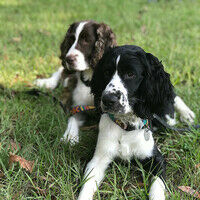Here is something we need to thinking about, learn, address, and use as composers - instruments that do not sound a 'pitch' which are commonly referred to as 'unpitched percussion'. Many of us start off by taking courses learning how to use and manipulate entities that sound pitches - whether it be voices, piano, guitar, brass, strings, most synthesizers, etc. We learn about notes making melody, we learn about chords, chord progressions, etc. Most theory and ear training courses and master classes I know, teach and concentrate on pitched instruments. Learning how to play and create sound on the unpitched ones is most often left to teaching percussionists how to play their instruments.
Sometimes there is a glimmer of help since we can refer to 'scores' which have instructions (drum notations). But more often than not, these a classical percussive instruments which in today's realm represent but a fraction of what is available.
From my vantage point with the dozens, hundreds, if not thousands of possible percussive instrumentation, for my own clarification, I have placed them into four very broad categories:
1. orchestral
2. ethnic
3. drum set
4. synth
The first two are self-explanatory. The drum set for me means that set of instruments (snare, toms, kick, and various cymbals) that are played with the four limbs by typically a pop, rock, country, etc. drummer. I put any percussive, non-pitched sound as anything that does not have/represent a real world instrument.
So now we get to the 'hard part'.
1. For most of us, we usually have #1, #3, perhaps some #2 and a bunch of #4. We could always use more but we generally need to work with the set we have. The first question we ask when given a project is, do we have the non-pitched percussion (NPP) we need or do we need to acquire more and if so, unless it is a missing #2 (e.g., we are scoring an Irish film) how do we decide on what else to purchase
2. Orchestral percussion is often something we study, learn and hear and so learning when to do a triangle hit, or a rhythmic bongo pattern, comes to many of us pretty easily. But say, we want to score a chase scene or scary scene with just percussion and we want to do it with our percussive 'sync' instruments - which ones should we use? how do we combine them together or use them separately in a pattern?
So the topic here is about from your own personal experiences, how did you learn to play your non-pitched percussive instruments? How did you decide on which synth percussion instruments to buy? Do you create your own percussive/rhythmic patterns or use the 'pre-canned ones' or both?
Or the 'question of the hour' :) At some point you may have said to yourself, "I know how to play and compose with all these pitched acoustic instruments, how am I going to learn to play non-pitched percussion and what composing styles should I learn to create rhythmic patterns with them"?



Thanks alot
Joel Irwin I think the short answer to most of the questions is if it feels right for the scene use it. Most of my unpitched percussion come pre made (I didn't record it) though I do tweak it for my purposes.
Regarding using unpitched percussion instruments here is a good example of it being used along with pitched percussion instruments, piano and other sections of the orchestra.
Composed by the late Jerry Goldsmith. The Score from Planet of the Apes (1968)
https://www.youtube.com/watch?v=G-Y7Sailr-4
Great insights as ever Joel. On the questions, I think understanding orchestration is really essential for all composers, even if we're working with virtual instruments, so learning to write for percussion for me came from those studies of the great composers and of people like Adler. Personally I use a wide mix of pre-made instruments and sounds (never pre-made loops though) and percussion I have made/recorded myself, as it gives a wider palette and options. Your last question is difficult, but ultimately, it all comes down to study and practice!